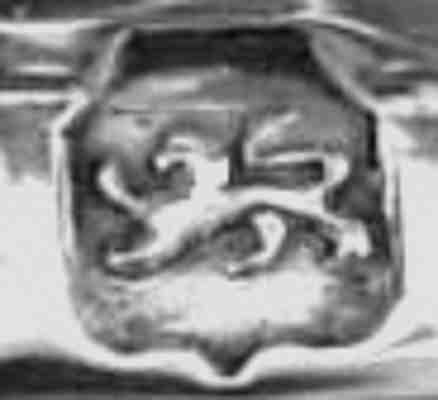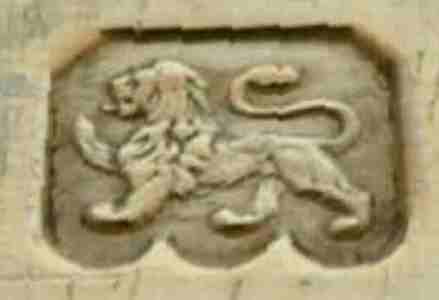(click on photos to enlarge image)
THE GOLDSMITHS' COMPANY OF LONDON'S STERLING STANDARD
When in the year 1300 the standard for silver in England was
set at 11 ounces and two pennyweights in the Troy pound (925
parts in 1000), it was related to money and as far as wrought
plate was concerned it had to be as good as money. The Statute
28 Ewd. Cap. XX which introduced this standard reads as follows:
"It is ordained, That no Goldsmith of England, nor none
otherwhere within the King's Dominions, shall from henceforth.......
work worse silver than money".
This requirement that wrought plate be closely related to money,
or sterling as it has always been known, has, over the centuries,
given rise to problems for the Wardens of the Goldsmiths'
Company who have always assiduously applied what they believed
to be their responsibility in upholding this law.
In 1477 for instance The Royal Mint introduced a new silver coin,
known to have been of a lower standard than sterling, which was
called the "Double Plakke". A piece of a trial plate of 1526
still exists that proves out at 885 parts in a thousand and it
is assumed that that was the standard used in the minting of
this new coin.
The Wardens at Goldsmiths' Hall were now faced with the
problem that it would be perfectly legal for their Freemen to
produce plate of less than sterling standard so long as that
plate was not less than 885 parts in 1000 fine! All the evidence
is that the Assayer continued to use the sterling standard for
his assay and indeed an Act (17. Edw VI. Stat.1 c 1) was passed
in that year stating that the Wardens would be liable to a fine
if they passed sub-standard plate through their assay. There is
no evidence that any silversmiths tried to submit plate of this
lower standard so that this problem seems to have been overcome
amicably and the following year the alphabetical letter, now
known as the date letter, was introduced to identify who the
Wardens were in any given year in which plate had been assayed.
The Wardens continued to enforce what they understood to be the
law when King Henry VIII debased the coinage of the realm. By
the reign of Edward VI there were only three ounces of fine
silver in the pound in English coin which means that, had the
Wardens at Goldsmiths' Hall followed the Statute of 1300
literally, silversmiths would have been turning out wares
virtually made of copper since this is the base metal with which
silver is alloyed.
There are no references in the minute books at Goldsmiths' Hall
to this problem although it is widely believed that the lion
passant guardant, commonly known as the "sterling lion", was
introduced by the Wardens to show that they had taken the
decision to maintain the old sterling standard. It is certainly
true that plate of this period struck with this mark is of
genuine sterling standard.
In October 1551 the standard for silver coin newly minted was
restored and was even 1dwt better than sterling but there was
quite a bit of earlier coin still in circulation and this gave
rise to an anomalous situation since there were now quite
obviously coins of the same face value that were intrinsically
of quite different values.
Lord Burleigh, who was the Lord Treasurer was greatly concerned
at this unsatisfactory state of affairs but it was not until 8
November 1560 that he introduced an indenture that restored the
old standard for all coin. The wording of this indenture,
however, gave rise to a major problem.
The method of assay at both the Mint and at Goldsmiths' Hall
was cupellation and this entails the placing of a small crucible,
known as a cupel, made of bone ash in a furnace. The cupel is
charged with a small quantity of lead together with the sample
to be assayed. When molten the lead and all impurities,
including the alloy, are absorbed into the cupel so that what is
left is pure silver. This can then be weighed against the
alloyed metal to show how much alloy was in the original sample.
There is, however, a problem with this method in that a small
amount of silver (about 2dwt) is also absorbed along with the
impurities so that a sample that is of 11oz 2dwt fineness before
assay will prove out at only 11oz because 2dwt will have been "lost
in the fire" The wording of the indenture seemed to imply that
the final assay had to be 11oz 2dwt fine so that the original
sample would need to be 11oz 4dwt to allow for this loss in the
fire!
The silversmiths of the day were unhappy about this
interpretation since wrought plate would now have to be 11oz
4dwt fine which was 2dwt better than sterling. Although by the
1580s the Mint had reverted to the old standard for coin the
Wardens at Goldsmiths' Hall would not alter their view of what
the indenture of 1560 implied and this resulted in much acrimony
between Richard Martin, Warden of the Mint, and Thomas Keeling,
Common Assayer to the Goldsmiths& Company.
The silversmiths felt that if coin could now be 11oz 2dwt again
then so could wrought plate and there was considerable ill
feeling between the Freemen of the Company and its Wardens. It
was not until 1629 when Edward Holle, a specialist spoon maker,
brought a successful action in the Court of Exchequer against
John Reynolds Assayer to the Goldsmiths& Company, his assistant
and the Touchwarden for breaking spoons which were of "Mint"
standard that the Company was forced to revert to the old
standard again
(note 1).
There was a divergence between the standard for coin and that
for wrought plate between 1697 and 1720 when, for economic
reasons, the Government of the day introduced what is now known
as the Britannia standard but apart from this variation in the
law the Goldsmiths' Company have always been faithful to their
understanding of what was required of them in upholding the
standard of silver in England (and now Britain). I am pleased to
say that although there has been no silver at all in coin of the
realm for many years now, wrought plate assayed in Britain is
still of sterling standard!
David McKinley
David McKinley devotes much of his time to researching the history of silversmithing in England with particular reference to hallmarking at the London office.He writes for The Silver Spoon Club of Great Britain, The Silver Society and ASCAS website.
David McKinley is the author of the book THE FIRST HUGUENOT SILVERSMITHS OF LONDON.
|

www.silvercollection.it |
This is a page of A Small Collection of
Antique Silver and Objects of vertu, a 1500 pages richly illustrated website offering all you need to know about
antique silver, sterling silver, silverplate, Sheffield plate, electroplate silver,
silverware, flatware, tea services and tea complements, marks and hallmarks, articles,
books, auction catalogs, famous silversmiths (Tiffany, Gorham, Jensen, Elkington),
history, oddities ...
HOME - SITE MAP - SILVER DICTIONARY - COOKIES CONSENT AND PRIVACY
OTHER ARTICLES ABOUT: ANTIQUE SILVER
SILVER PLATE
ENGLISH SILVER
FRENCH SILVER
|
|







